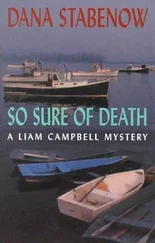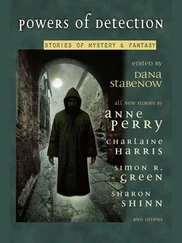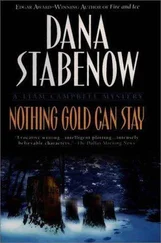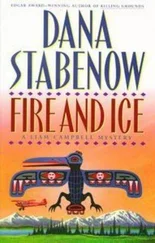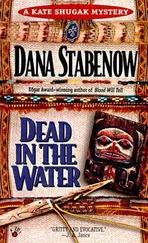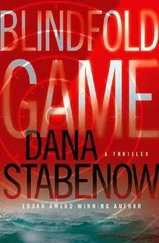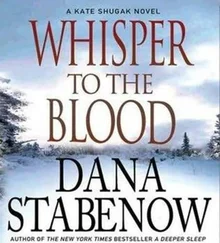More out of guilt at the immense salary she was pulling down than from a conviction that she’d find anything, she turned to the roll of microfiche for the year following Victoria’s conviction.
A year and one month after Victoria’s imprisonment, Pilz Mining and Exploration declared bankruptcy.
Well now. Kate sat back in her chair and contemplated this new information. Here might be an answer as to why Victoria burned down her house for the insurance money. Maybe the Pilzes and the Bannisters really were out of money.
But if this was the case, why hadn’t this information been brought forward at trial? It sure as hell provided motivation, which from the beginning had seemed to be lacking, at least in Kate’s opinion.
She thought of last night’s party in the Turnagain mansion. If the Bannisters had been broke, they had certainly recovered well.
She leaned forward again and began to read slowly through the story, placing the facts of the bankruptcy in chronological order. The Anchorage Times had been so obliging as to devote an entire business section of one Sunday issue to a history of the company, which wasn’t surprising when you realized that over two hundred people would have lost their jobs if the company had just folded. Of course, they were only making ninety-three cents an hour, but the mine commissary made a point of selling goods to miners’ families at or near cost. Back in 1941, the commissary made a profit of just $247 on $36,000 in sales. No, Skyscraper Mines had a history of high pay, good food, and fair dealing, and never lacked for labor.
Kate, back before the injury that left the scar on her throat and the permanent damage to her vocal cords, used to play the guitar and sing. A crowd-pleasing favorite was always “Sixteen Tons.” She didn’t think Tennessee Ernie Ford himself could have put it over at the Skyscraper Mines.
Not that this had anything to do with the matter at hand. Kate scrolled forward.
Pilz Mining and Exploration had been formed as a partnership between the scions of the houses of Pilz and Bannister, to share the expenses and profits of, primarily, the Skyscraper Valley Mines and, secondarily, additional mines outside of Fairbanks and Juneau. The first lode of the Skyscraper Valley Mine had been discovered by one Torrance Hurley in 1906 near the top of Skyscraper Mountain in the Talkeetna Mountains north of Anchorage. The gold was fine, but the ore was high grade enough to haul in a sluice box, and of course as soon as the news got out, every miner with a gold pan showed up, and pretty soon the 3,500-foot alpine valley was wall-to-wall claims. Over the years, the mines consolidated into two controlling corporations, and in 1935 along came Herman Pilz, who bought them both out, and the Pilz Mining and Exploration Company, adding to their holdings in Fairbanks and Juneau, became the largest producer of gold in the state. From 1936 to 1942, the Skyscraper Valley mines produced a total of 152,429 ounces of gold. At $35 an ounce, that was $5,334,015. At the time, that was real money.
In 1941, the Japanese attacked Pearl Harbor, the nation was at war shortly thereafter, and the U.S. War Production Board declared gold mining to be a nonessential industry. There was a brief period of fierce activity on the part of PME to extract as much gold as was humanly possible in the time before the closure, followed by a war-long hiatus. The mine didn’t get back up to speed until 1947. In 1951, gold was selling at $34.72 an ounce. PME began to diversify, beginning in the 1950s with oil leases in Cook Inlet, more oil leases in Prudhoe Bay in the 1960s, coal leases near Healy in the 1970s, zinc and lead leases near Kotzebue in the 1980s, and still more oil leases in Cook Inlet and on the North Slope in the 1990s.
PME held no majority in any of these concerns except for outright tide to their various gold mines, enough to exert a healthy influence over the board of directors, but not enough to concern themselves with anything except the bottom line. The gold mines were the only part of their mineral-producing empire that required them to pay salaries and benefits to employees. There had been union problems, which led to problems with the color of the bottom line, which had led to layoffs, which had led to more union problems, and then the price of gold, which had reached a high of $615 dollars an ounce, began to fall. The company had racked up a lot of zeros in legal debt. By then, the mines were, without exception, in serious need of some heavy investing in new mining technology and infrastructure. Their debtors were unwilling to wait for payment, and PME’s legal staff advised declaring bankruptcy to give the corporation breathing space to get back on its financial feet.
At this point, Kate’s stomach growled loudly enough to draw a condemnatory glance from the reference librarian. Kate busied herself with loading up on quarters from the change machine and printing out the relevant stories.
It was one o’clock, and Kate headed for Thai Kitchen on Tudor, where the best pad thai in town was served. She was head-down in it when her backpack started to vibrate. She jumped, dropping her chopsticks and knocking over her Coke. The backpack fell off the chair and scattered its contents across the floor and under the next table, which was, fortunately, unoccupied. One of the things that fell out was her new cell phone, which vibrated even farther across the floor, where it was scooped up by a white-haired matron in flowered polyester. “Is this yours, dear?” she said.
“Thanks,” Kate said. She couldn’t remember which button to push to answer it. The matron said, “Need some help there, dear?” and took the phone back. “I’ve got the same phone,” she said with a smile. “Costco, right? It takes a while to figure the little devil out.”
Kate retired to her table, kicking cash, notebook, pens, an address book, pencils, Tampax, Blistex, a comb, and a roll of cherry Lifesavers toward her backpack, and said into the phone, “Hello?”
“Kate?” Kurt said. “Is that you?”
“Yes.” She tried to keep her voice low. She’d been around too many people who seemed to think their cell phones were bullhorns. She knelt down and restuffed her backpack. “What’s up?”
“I’ve got some news for you.” Kurt paused for dramatic effect.
Kate sighed. “What?”
“I want to show you.”
“Kurt-”
“Come on, Kate, you’ll love it, I promise.” He gave her directions somewhere out near Jewel Lake. “I’ll be there in thirty minutes. I’m starving, I’ve got to grab some lunch.”
“Kurt, wait a-” There was a click and after a moment a dial tone.
Kate pulled the phone from her ear and looked down at the keypad. She sighed again and went back to the white-haired matron, who showed her how to turn it off.
Arriving in Jewel Lake fifteen minutes later, Kate drove through a subdivision of prepackaged cracker-board houses that all looked exactly alike and were all painted the very same shade of ash gray with the exact same white trim. The pavement ended in a forest of scrub spruce and spindly birch. A gravel road with more bumps and grinds than a stripper dodged tree-trunks as it passed by what looked like the original homesteads, which were closeted in stands of lilac and honeysuckle that had been there long enough to grow into trees thick enough to reduce the evening sunshine to an occasional dapple. Wouldn’t be long before the taxes got too high and some developer showed up with a fistful of cash and the plans to another cookie-cutter subdivision, where all of the houses had exactly the same floor plan and where the neighbors could lean out of their windows to exchange a cup of sugar instead of having to walk all the way down the sidewalk and knock on the door.
Читать дальше

